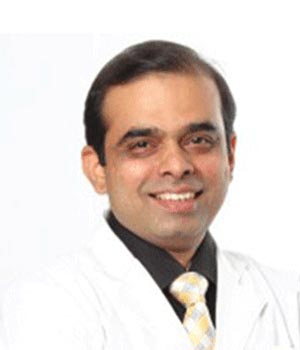Do you feel everything around is blurred – is it similar to looking through a foggy window? It could be Cataract!
A condition in which the lens of the eye becomes cloudy and interferes with normal vision, Cataract is a normal consequence of ageing and develops gradually. However, certain diseases such as diabetes and high blood pressure can also cause Cataract.
Some of the common symptoms of Cataract include:
- Frequent change in prescription glasses
- Blurred vision
- Increased sensitivity to glare
- Trouble seeing at night
- Halos surrounding lights
What kind of Cataract could you have | cataract surgeries
Immature cataract: It is the initial stage where it may affect only a small portion of the eye lens. The lens has developed some opacities, but areas of normal clear lens separate them. Most people won’t even notice they have Cataract, as there are hardly any symptoms.
Mature cataract: When early signs are ignored, the Cataract starts developing to a stage where the entire lens is opaque and cloudy. In ripe/mature stage, the lens appears white, and the vision is reduced which seriously affects one’s everyday routine.
Hyper mature cataract: It’s the advanced stage where the lens has a leaky liquid surface which may cause inflammation. The lens becomes smaller and wrinkled due to the leakage. If one allows Cataract to reach such a stage, the eye starts to pain due to inflammation and complication is sure to arise during surgery. Cataract is not dangerous unless it becomes overripe (hyper mature).
Don’t wait for it to reach hyper mature stage | cataracts surgeries
There is no need to wait for the Cataract to mature/hyper-mature. The advancement of technologies means that the cloudy lens can be removed from the eye at any stage of initial development.
Untreated cataract can become “hyper-mature” – a condition that makes it difficult to remove and can cause complication during surgery. In the early stage, there is less use of ultrasound and laser to break the Cataract into smaller pieces as the lens is softer which makes it easier to remove. However, once it hyper-matures, the lens becomes hard which could lead to a severe complication during the surgery.
To avoid such a situation, it’s critical to remove the Cataract soon after vision problems develop, rather than waiting for months or years. In fact, the length of the patient surgery and recovery are shorter if the Cataract is operated during an immature stage.
Different types of surgeries | cataracts surgeries
There are different types of surgeries and the technique used can depend on factors such as the health of the eye, equipment and the expertise of the surgeon.
Phacoemulsification:
The most common type of procedure performed these days is called phacoemulsification. In this method, a tiny instrument is inserted through a tiny incision, and no stitches are needed at the end of surgery. The minimal operation allows faster and safer healing.
Advanced Blade free robotic-assisted Cataract Surgery:
It is regarded as the most advanced laser technology for the treatment of Cataract as it has features that allow the surgeon to customise according to the need of the patient and provide the right treatment through 3D mapping. It is regarded as the safest procedure with no blade and vaccination involved. The recovery time is comparatively less than other surgeries.
Micro-Incision Cataract Surgery (MICS):
In this technique, the Cataract is removed manually through a small incision of about 1.8 mm to 2.2 mm. In microincision, Cataract surgery stitches and injection are not required. It is accurate and provides better contrast and focus while recovery time is a minimum of 4-7 days.
Surgery is common and painless
If you are avoiding surgery mainly because of the term ‘surgery’ associated with the treatment, then you need to reconsider your decision. If you continue to postpone the procedure, then it will eventually lead to total vision loss.
The surgery-related fear is reasonable, but a Cataract removal procedure is one of the most common, safest and effective surgeries performed in India. With experience and advancement in technology, the process to replace the eye’s lens takes very little time and the chances of serious complication are minimal to none.
So, don’t wait! Get free of cost 15 step eye check-up done at our state-of-the-art EyeQ Vision Hospital which has the highest level of quality and technology in eye care. EyeQ Vision has 44 super speciality eye hospitals with centres in Uttar Pradesh, Delhi-NCR, Haryana, Uttarakhand, Gujarat and Maharashtra.




